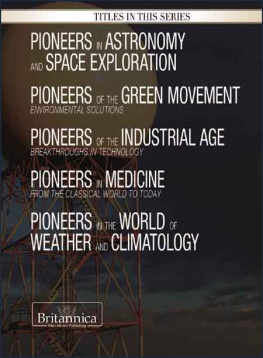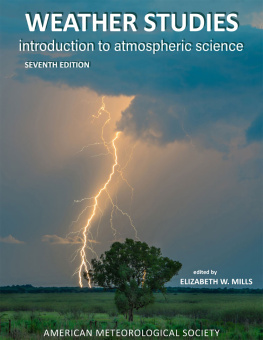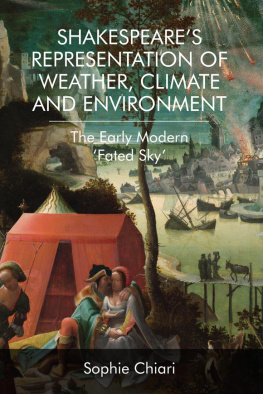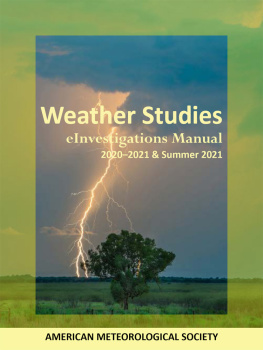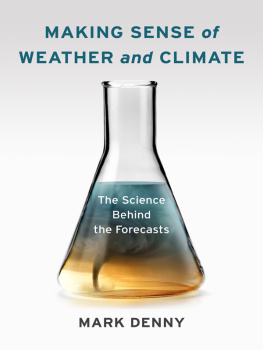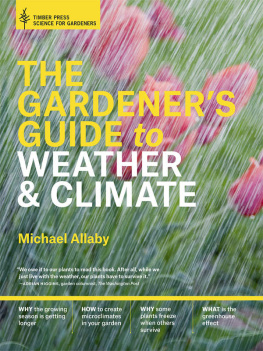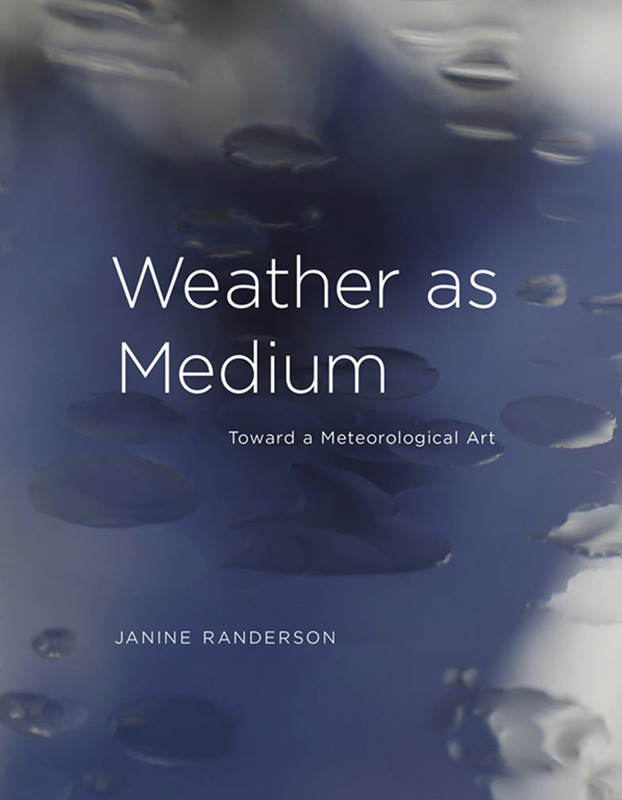Leonardo
Roger F. Malina, Executive Editor
Sean Cubitt, Editor-in-Chief
Synthetics: Aspects of Art & Technology in Australia, 19561975, Stephen Jones, 2011
Hybrid Cultures: Japanese Media Arts in Dialogue with the West, Yvonne Spielmann, 2012
Walking and Mapping: Artists as Cartographers, Karen ORourke, 2013
The Fourth Dimension and Non-Euclidean Geometry in Modern Art, revised edition, Linda Dalrymple Henderson, 2013
Illusions in Motion: Media Archaeology of the Moving Panorama and Related Spectacles, Erkki Huhtamo, 2013
Relive: Media Art Histories, edited by Sean Cubitt and Paul Thomas, 2013
Re-collection: Art, New Media, and Social Memory, Richard Rinehart and Jon Ippolito, 2014
Biopolitical Screens: Image, Power, and the Neoliberal Brain, Pasi Vliaho, 2014
The Practice of Light: A Genealogy of Visual Technologies from Prints to Pixels, Sean Cubitt, 2014
The Tone of Our Times: Sound, Sense, Economy, and Ecology, Frances Dyson, 2014
The Experience Machine: Stan VanDerBeeks Movie-Drome and Expanded Cinema, Gloria Sutton, 2014
Hanan al-Cinema: Affections for the Moving Image, Laura U. Marks, 2015
Writing and Unwriting (Media) Art History: Erkki Kurenniemi in 2048, edited by Joasia Krysa and Jussi Parikka, 2015
Control: Digitality as Cultural Logic, Seb Franklin, 2015
New Tendencies: Art at the Threshold of the Information Revolution (19611978), Armin Medosch, 2016
Screen Ecologies: Art, Media, and the Environment in the Asia-Pacific Region, Larissa Hjorth, Sarah Pink, Kristen Sharp, and Linda Williams, 2016
Pirate Philosophy: For a Digital Posthumanities, Gary Hall, 2016
Social Media Archeology and Poetics, edited by Judy Malloy, 2016
Practicable: From Participation to Interaction in Contemporary Art, edited by Samuel Bianchini and Erik Verhagen, 2016
Machine Art in the Twentieth Century, Andreas Broeckmann, 2016
Here/There: Telepresence, Touch, and Art at the Interface, Kris Paulsen, 2017
Voicetracks: Attuning to Voice in Media and the Arts, Norie Neumark, 2017
Ecstatic Worlds: Media, Utopias, Ecologies, Janine Marchessault, 2017
Interface as Utopia: The Media Art and Activism of Fred Forest, Michael F. Leruth, 2017
Making Sense: Art, Computing, Cognition, and Embodiment, Simon Penny, 2017
Weather as Medium: Toward a Meteorological Art, Janine Randerson, 2018
See http://mitpress.mit.edu for a complete list of titles in this series.
2018 Massachusetts Institute of Technology
All rights reserved. No part of this book may be reproduced in any form by any electronic or mechanical means (including photocopying, recording, or information storage and retrieval) without permission in writing from the publisher.
This book was set in ITC Stone Serif Std by Toppan Best-set Premedia Limited. Printed and bound in the United States of America.
Library of Congress Cataloging-in-Publication Data is available.
Names: Randerson, Janine, author.
Title: Weather as medium : toward a meteorological art / Janine Randerson.
Description: Cambridge, MA : The MIT Press, 2018. | Series: Leonardo book
series | Includes bibliographical references and index.
Identifiers: LCCN 2017059435 | ISBN 9780262038270 (hardcover : alk. paper)
eISBN 9780262353434
Subjects: LCSH: Art and meteorology. | Weather in art. | Art and science. |
Art, Modern--21st century--Themes, motives.
Classification: LCC N72.M48 R36 2018 | DDC 700.4/36--dc23 LC record available at https://lccn.loc.gov/2017059435
ePub Version 1.0
This book is dedicated to my daughter, Hazel Jessie Johnston. Aroha nui.
Table of Contents
List of figures
Guide
Series Foreword
Leonardo/International Society for the Arts, Sciences, and Technology (ISAST)
Leonardo, the International Society for the Arts, Sciences, and Technology, and the affiliated French organization Association Leonardo, have some very simple goals:
- To advocate, document, and make known the work of artists, researchers, and scholars developing new ways in which contemporary arts interact with science, technology, and society.
- To create a forum and meeting places where artists, scientists, and engineers can meet, exchange ideas, and, when appropriate, collaborate.
- To contribute, through the interaction of the arts and sciences, to the creation of the new culture that will be needed to transition to a sustainable planetary society.
When the journal Leonardo was started some fifty years ago, these creative disciplines usually existed in segregated institutional and social networks, a situation dramatized at that time by the Two Cultures debates initiated by C. P. Snow. Today we live in a different time of cross-disciplinary ferment, collaboration, and intellectual confrontation enabled by new hybrid organizations, new funding sponsors, and the shared tools of computers and the Internet. Sometimes captured in the STEM to STEAM movement, new forms of collaboration seem to integrate the arts, humanities, and design with science and engineering practices. Above all, new generations of artist-researchers and researcher-artists are now at work individually and collaboratively bridging the art, science, and technology disciplines. For some of the hard problems in our society, we have no choice but to find new ways to couple the arts and sciences. Perhaps in our lifetime we will see the emergence of new Leonardos, hybrid creative individuals or teams that will not only develop a meaningful art for our times but also drive new agendas in science and stimulate technological innovation that addresses todays human needs.
For more information on the activities of the Leonardo organizations and networks, please visit our websites at http://www.leonardo.info/ and http://www.olats.org/. Leonardo books and journals are also available on our ARTECA art science technology aggregator: http://arteca.mit.edu/.
Roger F. Malina
Executive Editor, Leonardo Publications
ISAST Governing Board of Directors: Nina Czegledy, Greg Harper, Marc Hebert (Chair), Gordon Knox, Roger Malina, Tami Spector, J. D. Talasek, Darlene Tong, Joel Slayton, John Weber
Leonardo Book Series Editor-in-Chief: Sean Cubitt
Advisory Board: Annick Bureaud, Steve Dietz, Machiko Kusahara, Jos-Carlos Mariategui, Laura U. Marks, Anna Munster, Monica Narula, Michael Punt, Sundar Sarukkai, Joel Slayton, Mitchell Whitelaw, Zhang Ga
Acknowledgments
I would like to express my deep gratitude to the many artists have given their time and lively thoughts to this research. I have enjoyed the vital conversations with Phil Dadson; David Behrman and Bob Diamond (via Skype); Joyce Hinterding and David Haines; Amy Howden-Chapman and Abby Cunnane of The Distance Plan; Natalie Robertson; Tom Corby; Billy Apple and Mary Morrison; Andrea Polli; Thorbjrn Lausten; Zune Lee; Bjarki Bragason (via Skype); and Sue Jowsey of F4; who have all helped to shape this manuscript. I also extend my thanks to all the artists who have given images for this book, and particularly to Ursula Biemann for the videos to view and the parts of narration that I have transcribed. I am profoundly grateful to climate scientist Dr. Jim Salinger and urban meteorologist Dr. Jennifer Salmond for their insights.
I am indebted to the eyes of many colleagues at AUT University who have given me feedback on my draft, including Professor Tina Engels-Schwarzpaul, Professor Chris Braddock, Professor Welby Ings, and Dr Maria OConnor. I have been fortunate for the steady support of my research assistant, Lucy Meyle: a colossal thank you for all your work. Thanks also to Paul Barrett for proofing and Rumen Rachev for referencing assistance. I owe many of my students for the creative impetus for this project. I am also thankful for the funding given by the AUT School of Art and Design and the Faculty of Design and Creative Technologies. In addition, I am grateful to Doug Sery and the editorial team at the MIT Press and to Kathleen Caruso in particular for her care and patience, and the opportunities provided for research with the Leonardo network.



